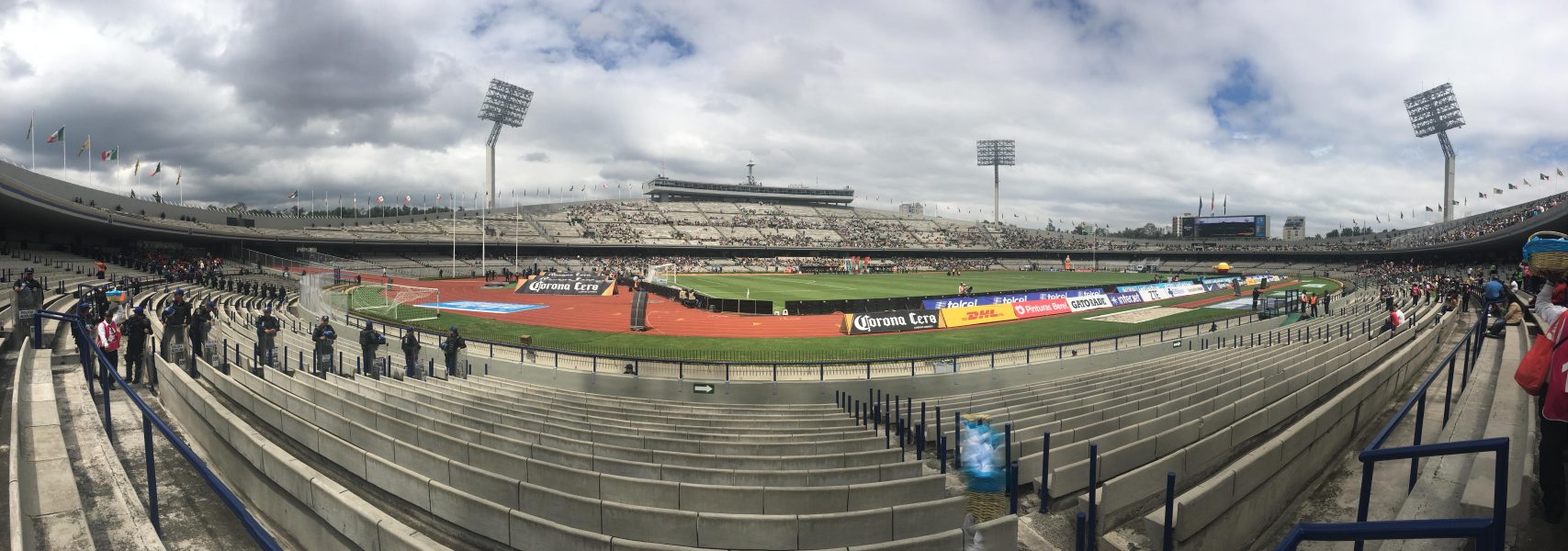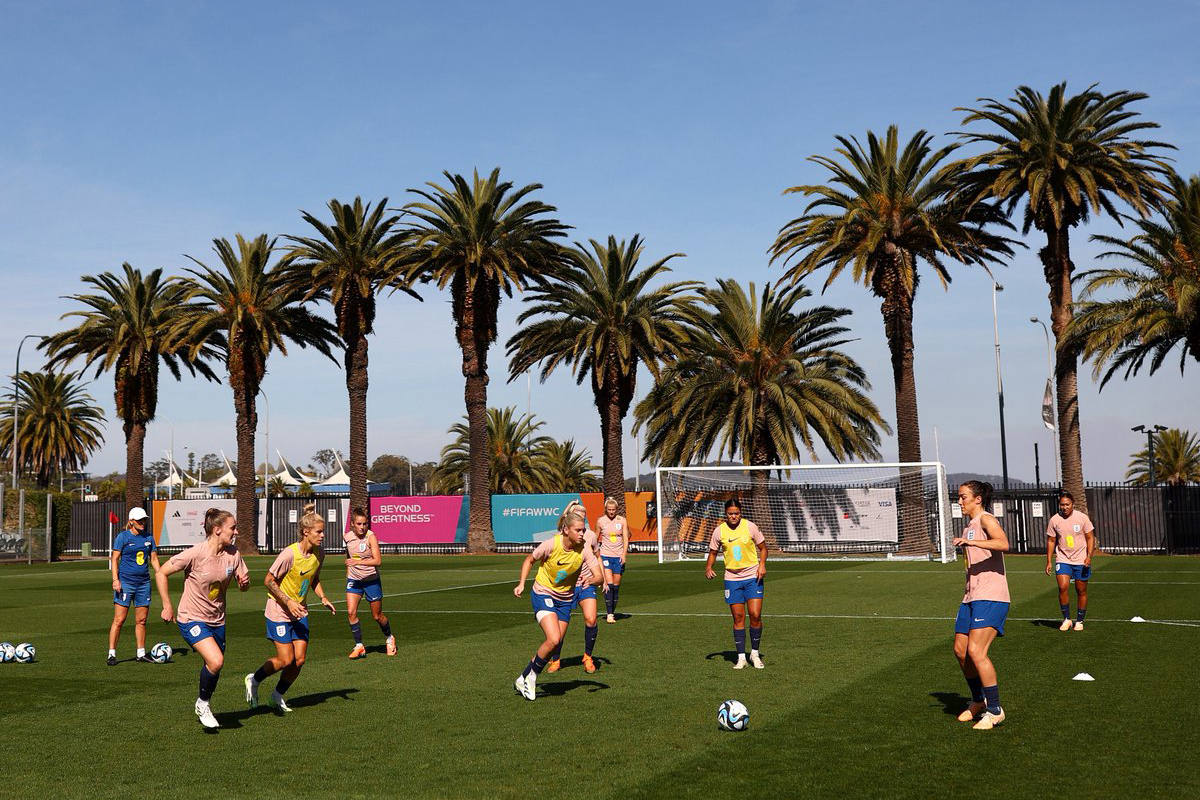Sleep? Who needs sleep?
The obvious answer to this question is “me”, but last Sunday, I had no choice but to sacrifice the full charging of my human battery to make sure I arrived on time to my scheduled destination.
I came to Mexico City for two fútbol experiences. The first was Estadio Azteca. The second was Estadio Olimpico Universitario, the home of Pumas on the campus of Universidad Nacional Autonomo de Mexico, and the home of the 1968 Olympic Games.
With the Club America vs. Veracruz match ending around 11 PM the prior evening, and with some post-game socializing with some fantastic new friends drifting into the wee hours of the morning, getting from Colonia Roma out to the Coyoacán for the traditional noontime Sunday kickoff between Pumas and Club Tijuana was a task far more daunting than it really should have been. But who doesn’t love a challenge?
I kicked off the covers and went from toothbrush in hand to fully dressed and inside an Uber in what had to have been some sort of record time.
Another rainy day awaited, and the gray gloom cast an intimidating shadow over the afternoon. The weather, however, was in no way dampening the spirit and enthusiasm of the Pumas fanbase, supporters of a team sitting in last place and fresh off of firing head coach Paco Palencia.
The atmosphere was a lovely one, the heavy majority of fans arriving to the ground on foot, on bicycle, or via public transportation and a short walk from the adjacent stops.
The stadium looked and felt beautiful, much in the same way that an elderly person who has lived an incredibly noble, passionate, nurturing life is beautiful.
The stadium matched the sky. It was big, cold and gray, an old Olympian. Built in 1952, the layout has changed hardly at all. It’s a concrete lovers paradise.

There were more families than I’d ever seen at a Liga MX match. Kids were everywhere, rocking their little Pumas jerseys with pride and excitement. While I wasn’t wearing Pumas colors, the iconic gold and white, my emotions were seemingly quite similar to those of the young children around me.
This was a long time coming. I grew up with some die-hard Pumas fans in my hometown of Watsonville, California, and have fond memories of watching the Hugo Sanchez led side accomplish the Bicampeonato with back-to-back league titles in 2004. I remember my friend Luis and his father Miguel teaching me the famous supporter chant, the chant that is so attached to Mexican Soccer as a whole without having a universally understood backstory.
“Goya… Goya… Cachun cachun… ra ra! Cachun cachun… ra ra! Goya… UNIVERSIDAD!”

In my most impressionable of childhood years, I heard flattering stories about American Mike Sorber, a stalwart in the Pumas midfield for a couple of years in the mid-90s. I heard stories about Tuca Ferretti’s cannon of a right foot, and the magic of his last years as a player. I listened to the nonstop worshiping of goalkeeper Sergio Bernal, the netminder on that Bicampeonato team and a man affectionately known as “El Puma Mayor”, Bernal having played for Pumas for over 20 years, eventually retiring in 2010.

I thought about Luis and Miguel quite a bit as a soft, humid mist billowed in the air. I wondered if they’d be watching back in Watsonville, or wherever they may be.
There were quite a few visiting Xolos fans milling about outside the stadium as kickoff was about a half hour away. I chatted with some folks I’ve seen in and around Estadio Caliente. There were a few Xolos fans who said they were living in Mexico City, while almost all of the people I spoke to were simply coming down for the weekend, utilizing those damn fine airfares to CDMX out of Tijuana to see their beloved club away from home.

The street food scene outside the stadium was quality. I bought two chile relleno tacos with rice and a Powerade for 55 pesos. If there’s such thing as a “brunch of champions” I feel like that may have been it, a meal that made me forget that I was on three hours sleep. I was refueled. It was time to step inside.
The walk down the tunnels and into the line of sight with the pitch shot some goosebumps down the arms. The subsequent walk to the press area sent some laughter into my heart. There was no “press box” for the journalists. There was a taped off area of concrete seats, right in the middle of the crowd, surrounded by screaming fans and Pumas families. Every type of vendor, from beer and pastries to ramen noodles, was walking right through the press area. We were in the lower stands looking out on a field surrounded by a large running track. There was certainly no “media privilege”. I liked it. I’m also not a beat writer on immediate deadline, but yet again, I digress.
The “Goya” chants were raining down from the raucous supporters in the second deck just above the press location. The traveling Xolos fans were in full voice themselves with “Fuerza Tijuas” as both teams took to the field of play.
It was a frustrating afternoon to say the least for the home side who were left to rue a handful of missed chances as Xolos would wind up winning the match 2-0 thanks to a fine second half strike from Gustavo Bou and a last second full-field sprint and tap in with the keeper out for Tijuana’s Luis Ángel Mendoza, aka “Quick”, a goal that certainly fit the mold of the nickname. The Xolos fans were having an absolute ball in the away end.
The Pumas fans sang and encouraged throughout the 90 minutes, and quite frankly deserved better from the men on the pitch. The crowd grew slightly cynical as the final whistle approached, and Mendoza’s goal with the final kick of the ball definitely threw gasoline on that cynicism flame.

An interesting mixture of hesitant applause, closing songs, angry profanity, boos, and whistles blended together in the moments that followed the final whistle. Pumas are a mess these days, both on and off the field, and the adoring loyalty of the club’s passionate fanbase should be rewarded. Instead, that loyalty is being tested.

As I was making my way to the press conferences, I walked past a mother holding her son in her arms. The boy, wearing his own Pumas kit, couldn’t have been more than four years old. He was balling tears and burying his head in his mother’s shoulders. I could hear her consul him.
“Esta bien,” she said repeatedly. “Solo es un juego.”
“No,” he emphatically responded as tears continued to flow. “Es terrible! ES TERRIBLE!”
It felt like that child was speaking for thousands of people.

I had a nice exchange with Eduardo “Chacho” Coudet in his press conference, the Xolos manager responding to my question about coaching against Miguel Herrera for the first time with nothing but class.
(Translated): “He’s a great manager and I know he did a lot for this club,” Chacho said. “But next Friday, he’s a rival. A great rival. It is 2nd vs. 3rd in the table. That’s all we can focus on. It’s a massive game.”
After the pressers, I took a stroll around the ground, with a couple sweet stops at the corner flags and the team benches.
The nostalgia began to flow once more, as I felt like I could see the thousands of athletes who had stepped foot in this arena since its first day over six decades ago.

I could see the timeless image of John Carlos and Tommie Smith extending their gloved hands into the air in a “Black Power” salute after winning the 200-meter dash at the ’68 Olympics.
I could see the World Cup matches from 1986, and feel the spirit of Diego Rivera, the legendary Mexican artist whose mural can be seen at the main entrance of the stadium.
I could see all those old Pumas stories from the Watsonville neighbors coming to life in front of me, and I sat there hoping that those glory days can soon return.

Then suddenly, the heavens opened, a Mexico City flash storm of the most quintessential variety. It went from dry to pouring in a matter of seconds, and there I was, standing on the track with a notebook and a phone in hand. I could see a few dozen people, media members and cleaning crews alike, scampering for cover. I looked up to the sky and felt the rain pelt down onto my hair and forehead. I knew this was my moment.
“On your marks… Get set… Go!”
I bolted down that track and crossed the finish line. I didn’t get a medal, but I’m damn sure I won the race.
(Be sure to keep it with SoccerNation and check out the rest of our special Mexico City series with Nate Abaurrea, including trips to the world-famous Estadio Azteca.)





